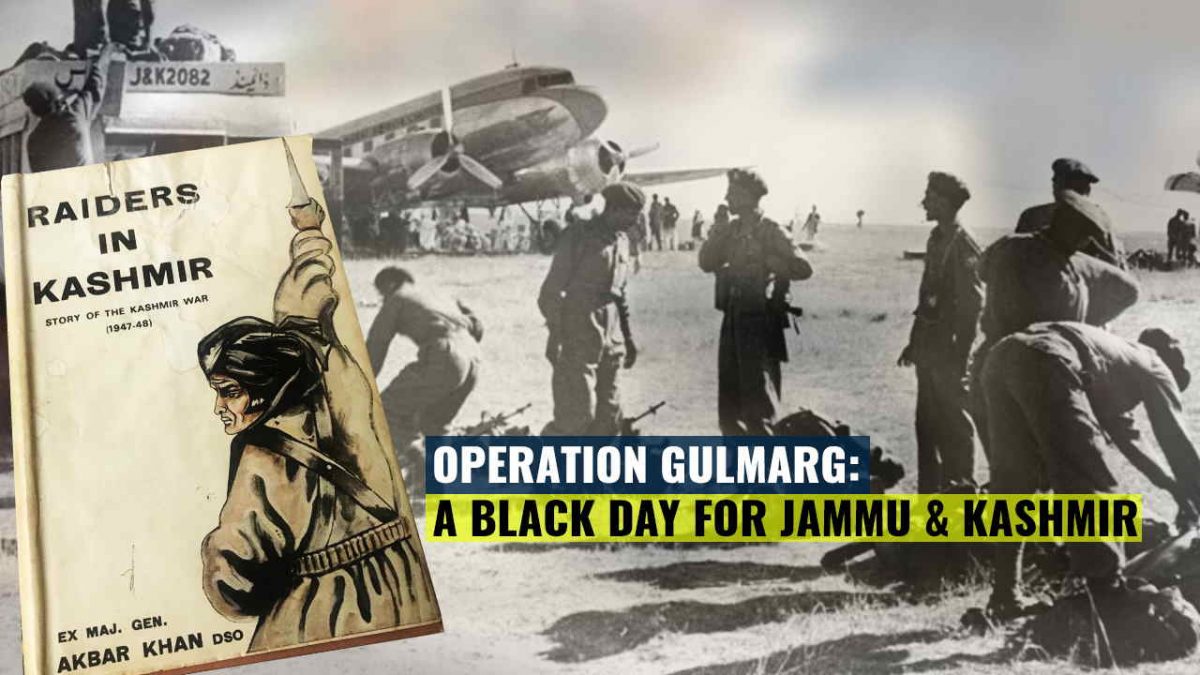For Mohammed Ali Jinnah and his newly-created Pakistan, it would completely negate his two-nation theory if the princely state of Jammu & Kashmir (J&K) decided to opt for India. When J&K showed reluctance to go with Pakistan, ‘Operation Gulmarg’ was initiated.
The Pakistan Government decided to attack J&K, with the attack commencing on 22 October 1947. The invasion, ‘Operation Gulmarg’, had taken months to plan. The Pakistani Prime Minister was involved in the planning, and so were the chief minister of the North West Frontier Province (NWFP), the country’s finance minister, prominent leaders of Muslim League and members of the Pakistan Army.
Jinnah himself greenlighted the ‘operation’. Major Khurshid Anwar, a 42-year-old Naib-Salar-e-Aala of the Muslim League National Guards, led the North-West Frontier tribesmen in the attack on Srinagar. His main column could make considerable progress on the Kohala-Baramula road, fanning out and devastating villages and towns on both side.
Uri fell to the raiders. On 26 October they captured Baramula and indulged in an orgy of rape, arson and looting. Women were abducted, and a large number were held in a camp at Alibeg in terrible conditions. Alibeg was run by the ‘Azad Kashmir Government’. Originally it had over a thousand Kashmiri women of all religions. Of these only a couple of hundred survived.
Faced with this threat, the Maharaja of Kashmir approached India for assistance on 24 October. On 26, the State formally acceded to India. On October 27, the first contingent of Indian airborne troops landed in Srinagar in the morning.
However, it was not until reinforcements arrived that the Indian troops could go on an offensive. On 8 November, Indian troops recaptured Baramula. They found the town completely ruined. Indian troops captured Uri on 15 November and removed any serious threat to Srinagar and the surrounding valley. This concluded the first stage of the Kashmir operation.
The invading Pakistan militia force (tribesmen) were mainly recruited by officials of the (NWFP) Government and incited to ‘jihad’ by the premier of the province, ably assisted by the Pirs of Manki Sharif, of Wana, and other Maliks. The Pir of Wana was one of the most successful recruiting agents. He would feast the militia and then arrange for them to meet the Deputy Commissioner of Dera Ismail Khan.
The tribesmen would then visit the Superintendent of Police, Dera Ismail Khan, and pick up rifles and ammunitions. Thus armed, they returned to the Pir who would again speak to them. Thereafter, incited to war and tempted by promise of loot in Kashmir, they left in lorries for their destination.
Operation Gulmarg was launched from bases in Pakistan. Rawalpindi was one of the main centers. The raiders were concentrated in towns like Sargodha, Abbottabad, Wazirabad and Jhelum. These towns served as supply depots and training centers. Here the raiders rested and recuperated, replenished supplies, sold women and consolidated loot collected during raids. Wounded raiders were also treated in hospitals and dispensaries in these towns. It was not without significance that many of these towns were important cantonments of the Pakistan Army.
The raiders were properly assisted with supplies of transport and petrol. Lorries and fuel were made available through active assistance of Pakistani officials. Petrol was a rationed commodity, to be supplied against coupons issued by district officials.
While civilians in Pakistan found it impossible to obtain petrol, it was easily made available to the tribesmen. In the NWFP, movement of motor vehicles was regulated. Transportation of motor vehicles, other than military, was not allowed except on permits. The vehicles carrying raiders were exempt. Their lorries had Pakistan number plates; those damaged in action were repaired in the workshops of Rawalpindi. Much of the modern equipment used by the raiders came from military stores of the Pakistan Government.
The raiders armoury included light machine-guns, mortars, mines, signal equipment and wireless sets with batteries. These were used in quantities far exceeding those lost by the Indian and Kashmir State Forces. As the fighting in Kashmir progressed, the number of raiders increased and the quality of their equipment improved.
Radio messages from the raiders were regularly intercepted. The codes employed in these messages were among those used by the Indian Army before partition. Pakistan Army personnel, ostensibly on leave, were fighting with the raiders.
After 15 August, 1947, the supplies of essential items from Pakistan to J&K had begun to decrease leading eventually to their discontinuance. Supplies from west Punjab of oils, food, salt, sugar and cloth was stopped. Working of postal system became impossible. Bank accounts were inoperable. Postal certificates not cashed, cheques of West Punjab Banks were not honored.
Even the Imperial Bank branches were hard put to meet their obligations. The civilian administration of Pakistan had worked in tandem with the Muslim League. Jinnah was also the head of the Muslim League, as well as head of State. Many officials down the line were trusted members of the League.
A junior Government official could be quite high in the Muslim League command. The show was run by the Muslim League High command, working through its trusted officers. A fair number of them held positions in the Government.




















